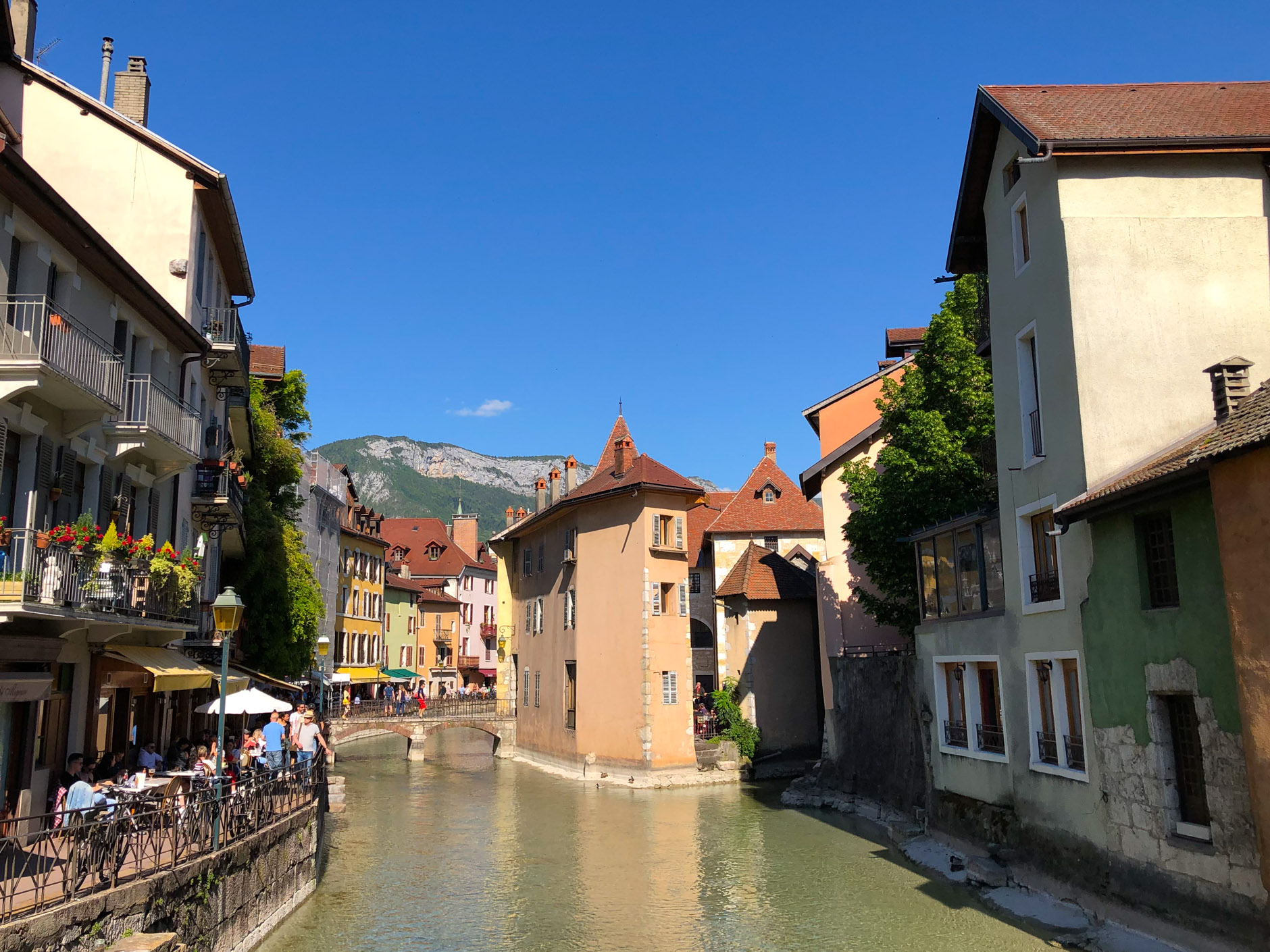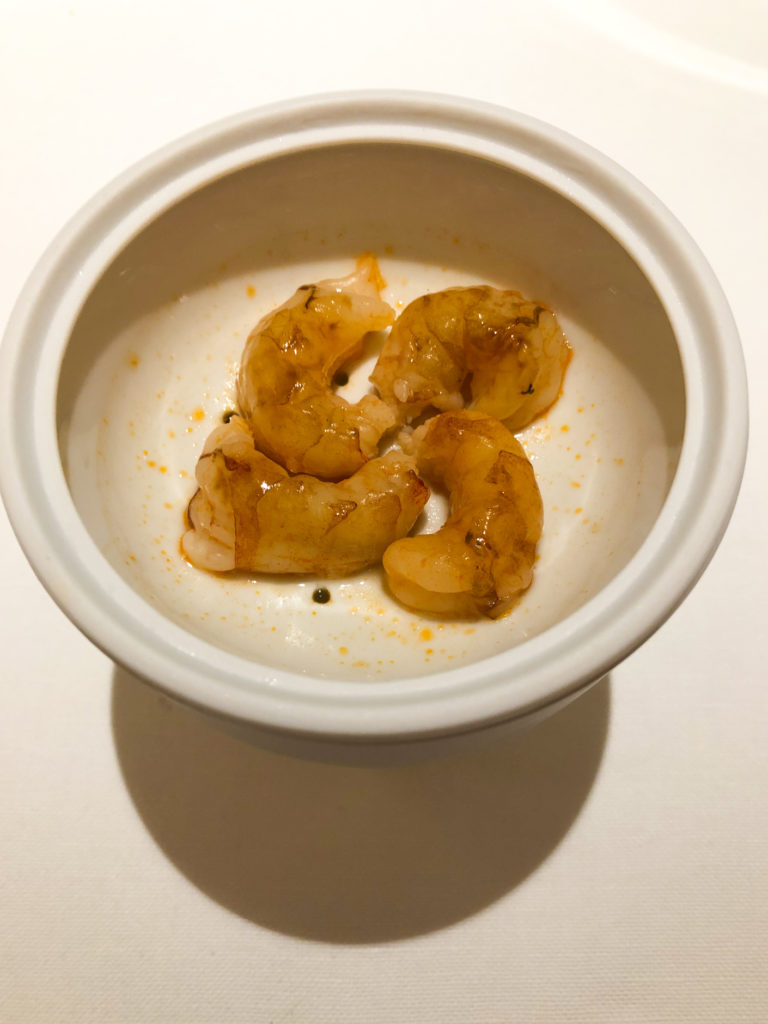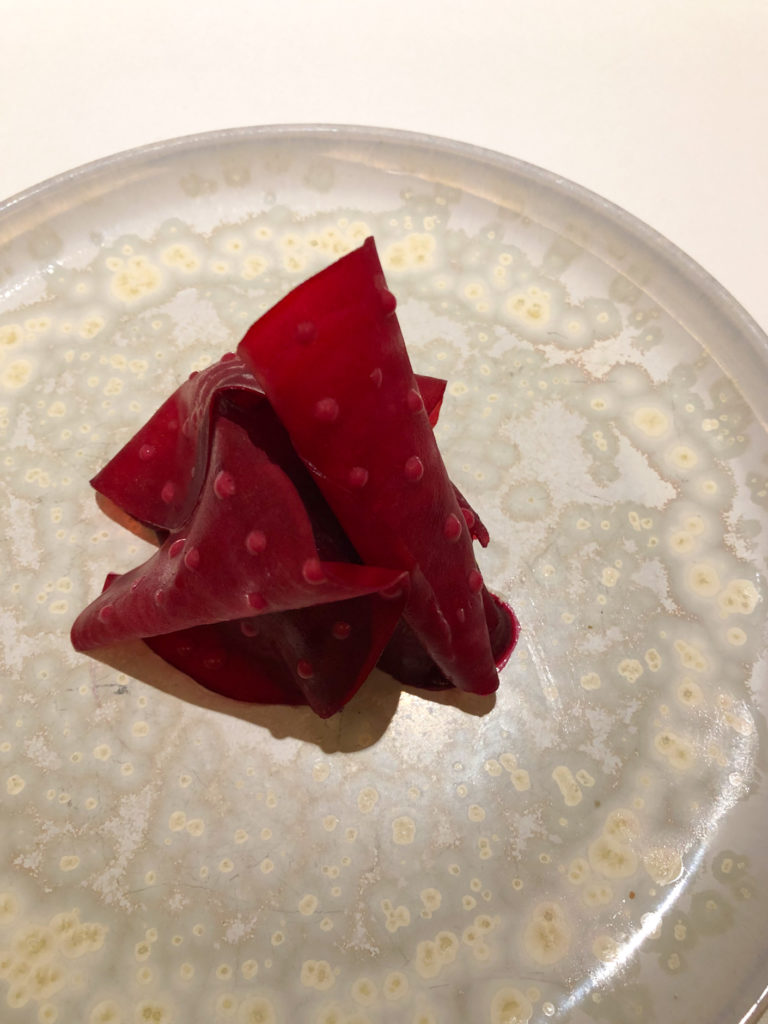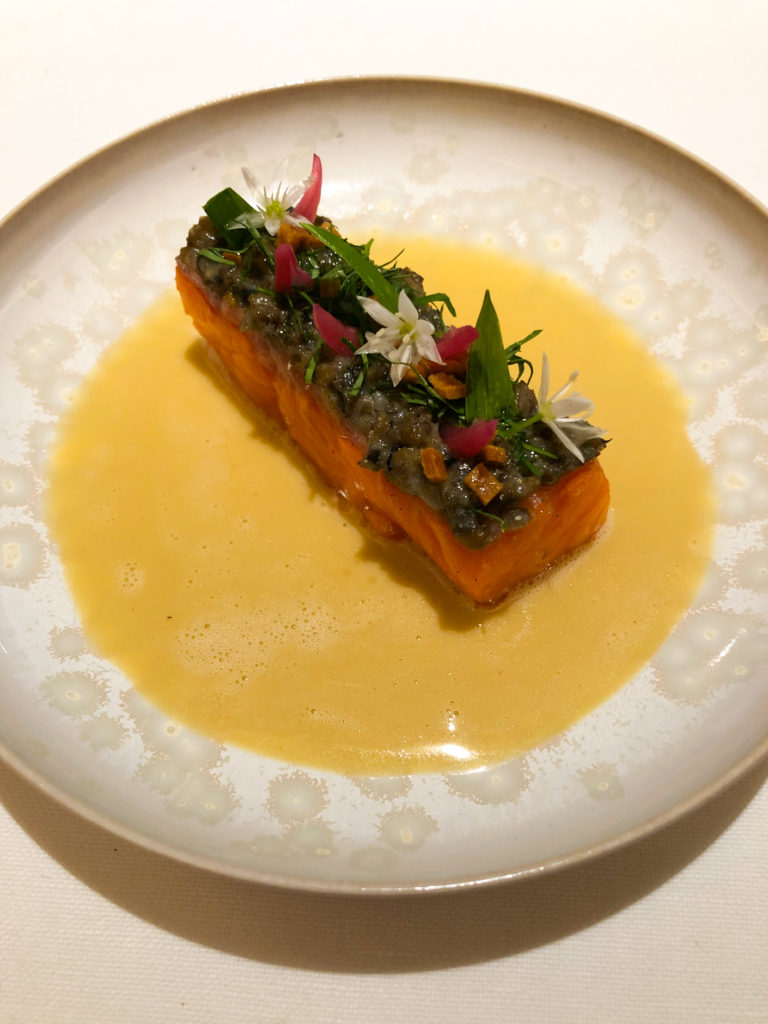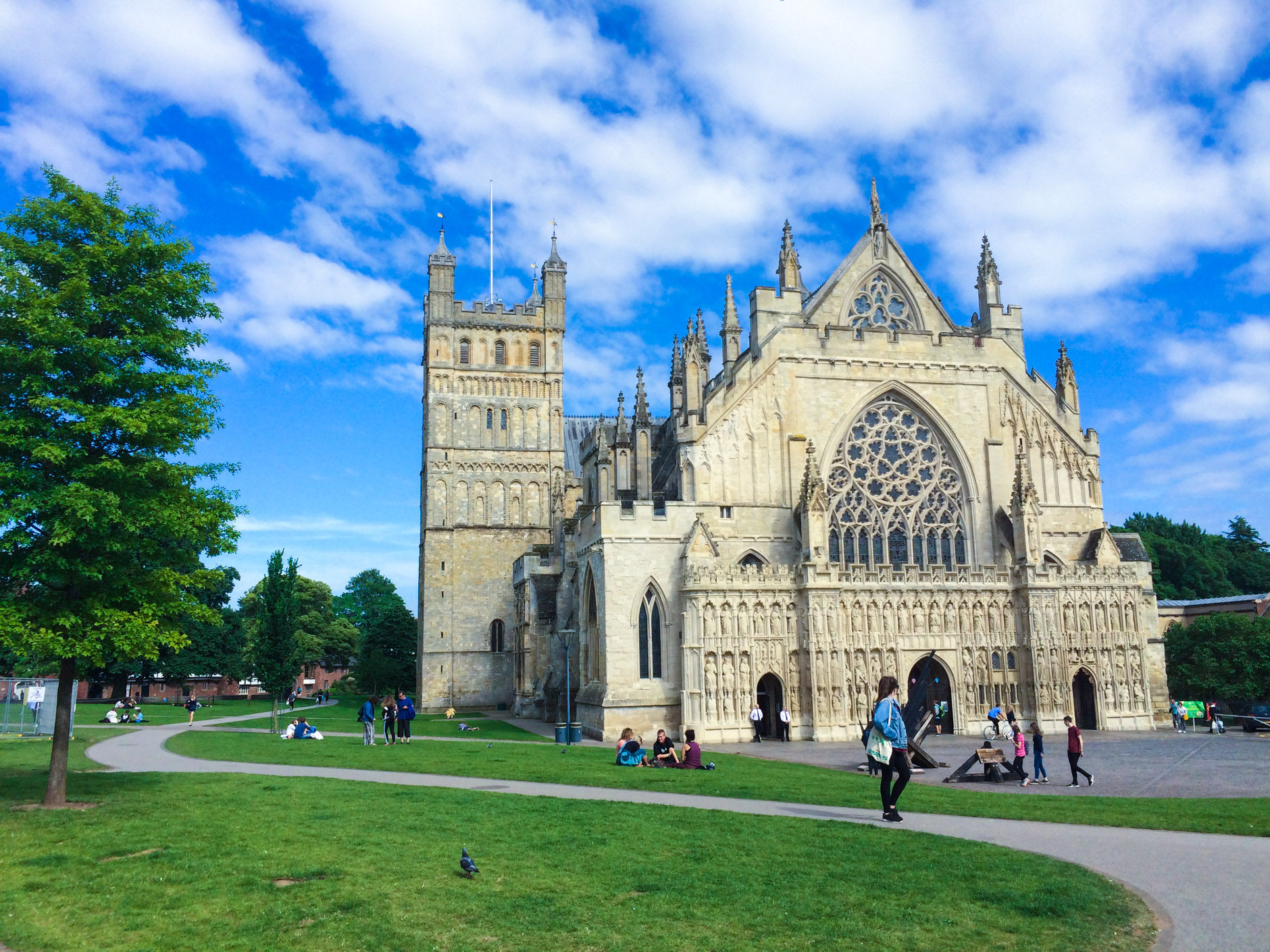Annecy may not be the first destination most people think of when considering holiday options in France. The main metropolitan centres – Paris, Lyon, Nice, etc – usually get a look-in first, as do the chateaux of Bordeaux, the lavender fields of Provence or that clichéd British favourite, the Dordogne. These all have their attractions (and downsides) but Annecy and the surrounding Alpine region are well worth a visit for the curious bon vivant.
Annecy, the so-called ‘Venice of the Alps’, is the capital of the Haute-Savoie department and a relatively ‘new’ part of the country (it only become part of France in the 19th century). Its proximity to Geneva in the north and Turin to the south west make for a rich fusion of culinary traditions.
The picturesque town centre is all cobbled streets and labyrinthine canals, reminiscent of Bruges or Freiburg. And then there’s Lake Annecy, one of France’s most spectacular areas of natural beauty with its pristine, azure water ideal for sailing, watersports or enjoying a lazy lunch on board the Restaurant MS Libellule.
And it’s a doddle to get there. Annecy is connected by easy, direct train links from Lyon and a TGV route from Paris (both train journeys feature stunning scenery), as well as easy connections from neighbouring Switzerland or Italy. But, pro-tip: if you’re not driving, there is no Uber in Annecy and you’ll need to rely on buses, a traditional taxi service or your feet – the latter being the best for working off all the tartiflette.
Savoyard fare
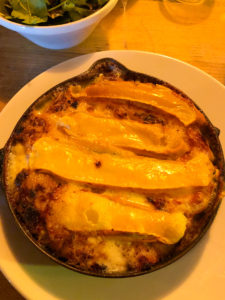
Tartiflette at Le Chalet
For traditional, affordable and restorative (but not necessarily healthy) local cuisine, head to Le Chalet in Annecy’s old town. Located on the bank of the Thiou, it may be right in the touristic epicentre, but is nevertheless a joyous, mock ski-lodge that smells invitingly of cheese. “The only thing better than cheese is semi-melted cheese,” Anthony Bourdain once said in Parts Unknown, and what better way to honour him than a raclette, fondue or their wonderful tartiflette. For 19 Euros you can have your own frying pan containing potato, lardons, crème fraiche and reblochon, all bubbling away with almost criminal abandon. This is last-meal-on-Death-Row kind of food made all the better by friendly service and a cosy atmosphere.
Markets
If self-catering make sure you head down to Au Rendez-Vous du Terroir, a comprehensive market and epicerie selling local, seasonal and artisanal produce, though note it is closed on Sundays and Mondays. On Sundays, Tuesdays and Fridays there is a fabulous market in the old town on Rue-Sainte Claire (see more here).
High end cuisine
Annecy is blessed with a concentration of very good high-end restaurants, making it a great gastro destination in its own right, though whether they’re entirely worth the financial blow-out is open to debate.
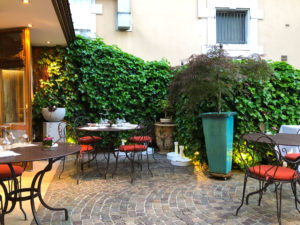
Dining al fresco at La Ciboulette
La Ciboulette opened in 1986 and gained its first Michelin star in 2007. For whatever reason it was stripped of its star in 2018 (the year that Michelin ruffled a few feathers by ‘demoting’ established places and ‘promoting’ new kids on the block). The perceived drop in Michelin status shouldn’t mean much though as the food is delightful, and reasonably priced at 65 Euros for 4 courses (including cheese). That said, from the décor alone it does feel like it is still vested in that late 1980s or early 90s style – there’s an element of Otto’s about it with that similar kind of old school service but without the kitsch. Expect foie gras (gently seared in the pan with cherries on the side for fruity acidity), pigeon served so rare a skilled vet could probably bring it squawking back to life, langoustine carpaccio or turbot from Brittany. On my visit there were tentative half-hearted nods to modernism: the squab came with a matcha smear that looked like an afterthought; amuses bouches were served more because they’re de rigeur now than any genuine sense of generosity; the dessert was decorated with a token edible flower. It feels like this isn’t the restaurant’s natural style and these have been added simply to show they’re keeping up with trends, which seems a bit of a shame. Perhaps it shouldn’t try to be something it isn’t. Nevertheless, you will undoubtedly have a lovely meal here. On a balmy evening dining outside in their semi-private courtyard is highly recommended.
The jewel in Annecy’s crown is 3-starred Le Clos des Sens. This is Laurent Petit’s domain but unlike his name it is by no means small. Surprisingly, despite the spacious table layout they fit in quite a lot of covers, and room for table-side mini stools for ladies’ handbags, but on my visit it was a little disappointing that they didn’t let anyone dine outside when it was a perfect summer’s day. The kitchen garden and the views over Annecy are a wonder in themselves.
At Le Clos des Sens, the service is (virtually) pitch perfect. The maîtresse d’ floats around with swan-like elegance as she keeps a watchful eye on service – just a discreet but reassuring presence in the background, whilst Laurent himself isn’t too keen to do the handshaky-showy thing many chefs are inclined to do these days (but is very approachable nonetheless). At times there’s a bit too much fussiness as if they’re constantly trying to re-justify their 3 Michelin stars and the price tag attached. For instance, you’re given a glass of water on arrival, which is all nice and lovely, but it comes with a very long poetic description about how it has been filtered from a mountain stream, and so on. It’s just H2O. And of course, when you include all the obligatory amuse-bouches, and pre-amuse bouches, 7 courses soon becomes 52. For £200 maybe that’s no bad thing – it probably constitutes 4 meals in itself.
This lunch – yes, lunch – took four hours. Many of the in-between courses are now consigned to a footnote, but some dishes really stood out. There were paper-thin shavings of mushroom that were arranged like a folded napkin. There was end-of-the-season white asparagus in both raw crudité and roasted form in a rich and creamy velouté of its own juices. There were thin slices of beetroot containing smoked féra (an indigenous white fish in the waters around Savoie and Switzerland) – this was an attractive and unexpectedly brilliant plate of food. Then there was trout, cooked perfectly sous-vide, with a snail topping and heavenly Chignin-Bergeron sauce. Oh and prawn tartare served in a bowl to which a prawn ‘tea’ was added by a waiter and a lid placed on top. The waiter removed the lid and the ‘tea’ had vanished through a mystery trap door of sorts, creating both theatre and a wonderful ecrevissy flavour. That was about the limit of the wizardry (thankfully, as I’m not a fan of such things) but each dish was executed to perfection.
And there was cheese. My God was there cheese.
With the exception of mushrooms from just outside Paris, nearly all of the ingredients came from Annecy and the surrounding area. Laurent Petit is, no doubt about it, a truly skilled chef. But I did have doubts as to whether the expense was worth it. That’s not to say it wasn’t good. It was good. But it costs about 4 times as much as non-starred places that are arguably just as good.
Liquid refreshment
All that wandering around an Alpine town is thirsty work. There are bars and taverns a-plenty in the historic old town and you can have a very enjoyable Aperol Spritz by the Thiou or beer at Le Munich as you engage in that most French of pastimes: people-watching.
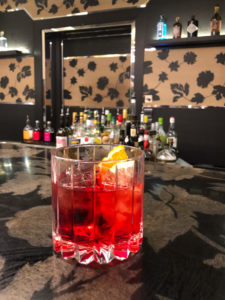
Negroni at Le Hip Bar
Something that can be a little frustrating about the brasseries and even restaurants of anywhere south of Paris is the lack of decent cocktails. That’s a sweeping generalisation I know, but before Annecy I had visited Lyon, Marseille and Aix (all places I love incidentally), and in each of these it was impossible to get a Negroni or decent Martini. At long last, Le Hip Bar at the Imperial Palace Hotel was able to oblige (oddly their Negroni is served with both a slice of lemon and orange). The hotel feels very Wes Anderson – you wonder if Ralph Fiennes will pop up any moment and whisk you away on some mad caper through the Alps – and it’s an idyllic setting by the lake.
Whilst nearby Chambéry is known for its vermouth, and the neighbouring Jura for its sherry-like Vin Jaune from the Savagnin grape (which is currently having its moment in the sun), the wines of the Savoie region tend to be unknown, perhaps not getting much attention beyond people’s skiing holidays. The micro-climates around the lakes and mixture of clay and limestone soil make for an interesting mix and indeed some 17 crus under its appellation system, not a million miles away from (literally or metaphorically) the northern Rhônes. White wine dominates, naturally, with Jacquere, Roussette and Chasselas being three of the main indigenous grapes (often being a tad too sweet), whilst light reds tend to be based on Mondeuse, Gamay and Pinot Noir. Will Savoie wines, a close cousin of the Rhônes, soon have their moment in the sun, beyond the ski slopes? Restaurants like Le Clos des Sens or Vinistrot in central Annecy showcase them well but it remains to be seen if the restaurants of Paris or London deem them worthy of their attention.
This travel guide was updated in August 2019. All words and photography by J A Smith.

